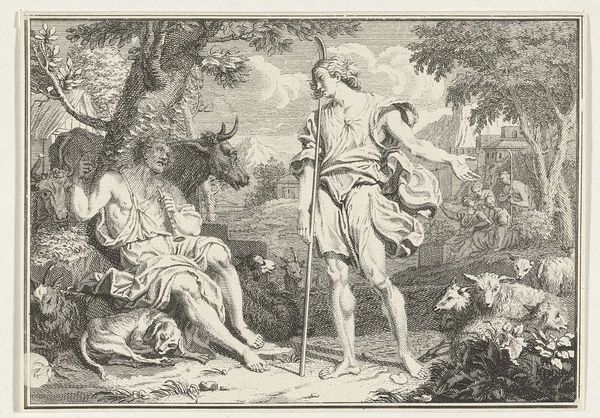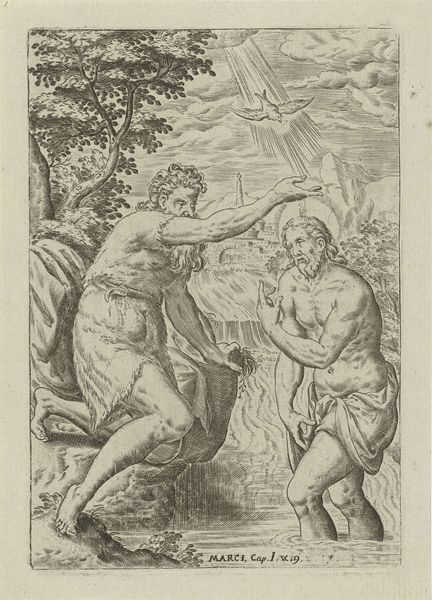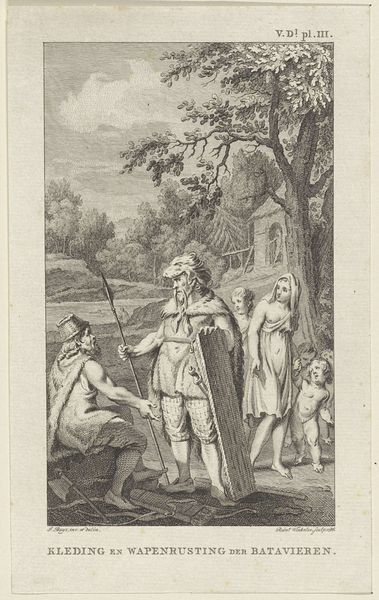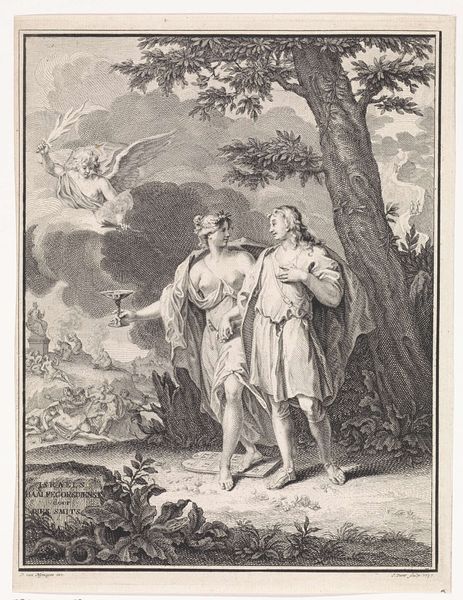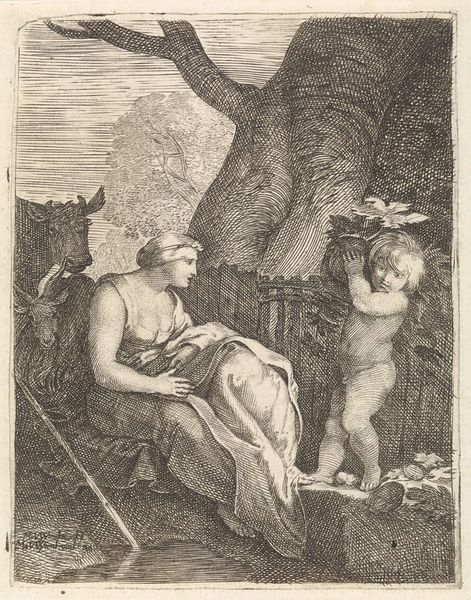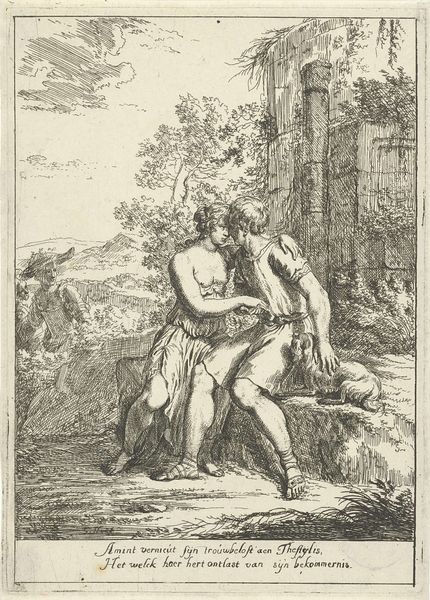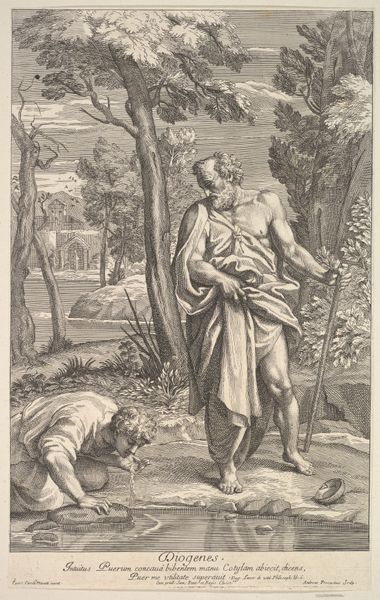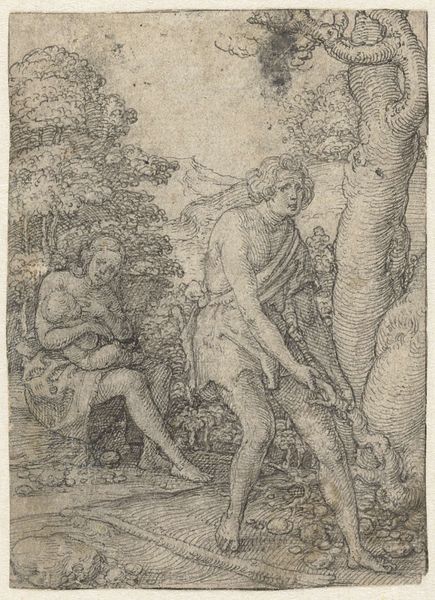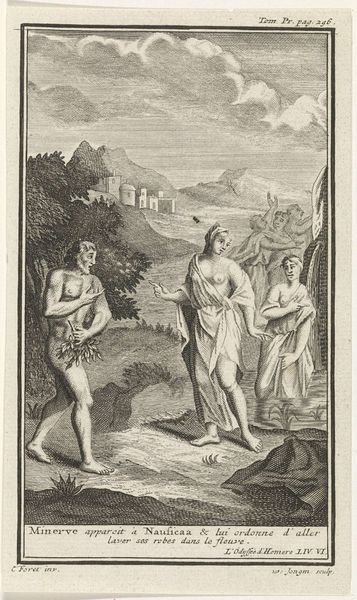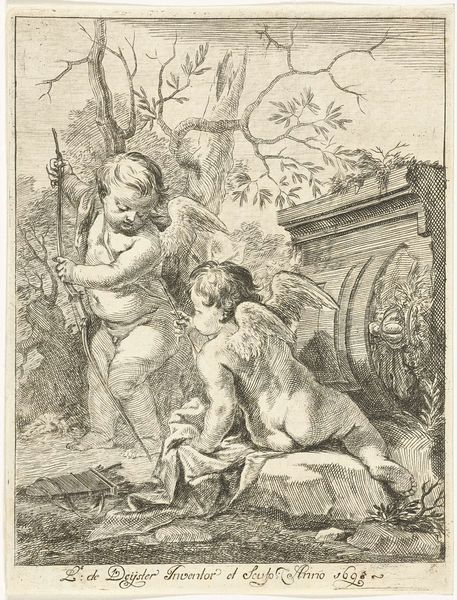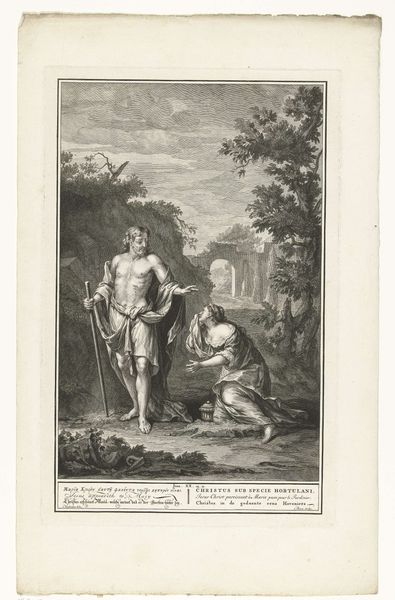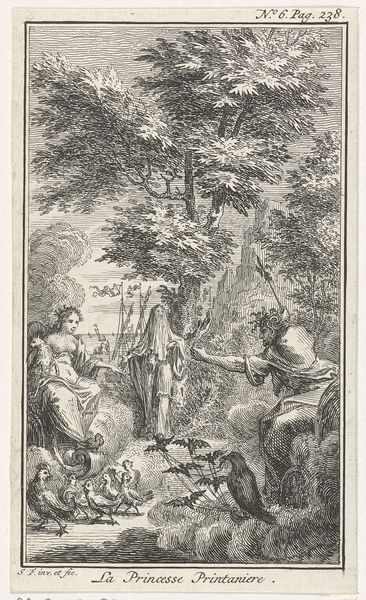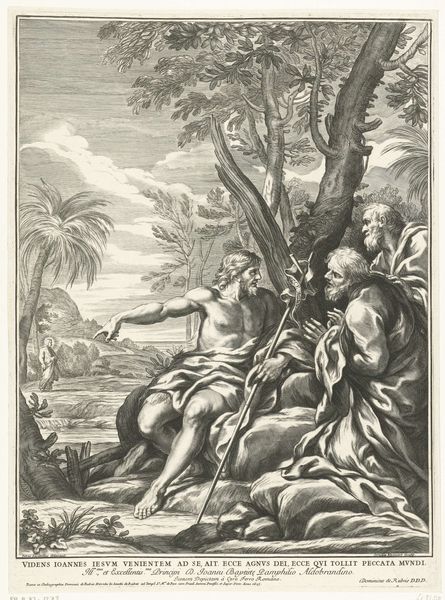
print, etching
baroque
etching
landscape
figuration
genre-painting
Dimensions: height 141 mm, width 124 mm
Copyright: Rijks Museum: Open Domain
Editor: Here we have “Wasvrouw en herder bij een beek,” or “Washerwoman and Shepherd by a Brook,” a lovely etching, probably made somewhere between 1600 and 1760, by Moyses van Wtenbrouck. I’m immediately struck by the pastoral calmness, the everyday-ness of it all, yet something feels… slightly off? What do you see in it? Curator: Oh, I love how you sensed that subtle unease! The etching captures this seemingly simple moment, right? Washerwoman, shepherd, a bit of idyllic nature. But there's also this almost stage-like quality – the figures posed, the backdrop a little too perfect. Almost as if it wants us to meditate about idealization, and nostalgia. Think about those theatrical Baroque landscapes... Does the image feel theatrical to you? Editor: Yes, now that you mention it! The way they’re framed by the fence and the trees… it's like a play! So, is van Wtenbrouck poking fun at the idea of simple, country life? Curator: Perhaps “playing with” is a better way to put it, rather than mocking it! The Baroque period, especially, was obsessed with appearances versus reality. Maybe the artist invites us to question that contrast. The viewer, then, should always wonder...what is "authenticity," really? Or more important, are you buying into the mirage of idyllic representation? Editor: That's fascinating. So much more than just a pretty scene. It also sounds relevant to how people portray themselves on social media today! Curator: Absolutely! See, art echoes through time. I initially missed that detail, actually. Thanks! Editor: So, this whole exercise has been so insightful. Thinking about idealization, reality, and just how "staged" art can be really offers a great opportunity for future museum-goers and art critics.
Comments
No comments
Be the first to comment and join the conversation on the ultimate creative platform.
